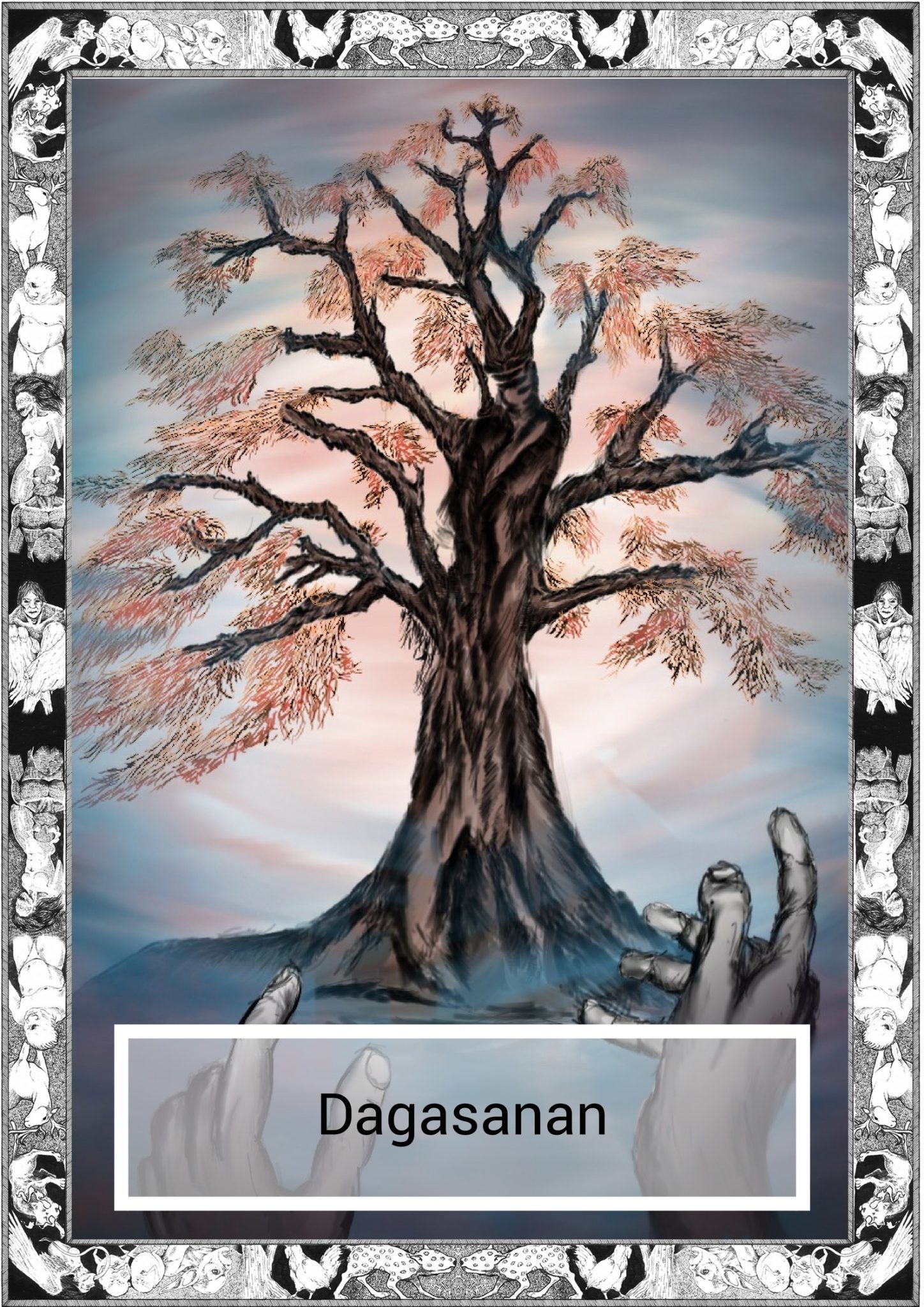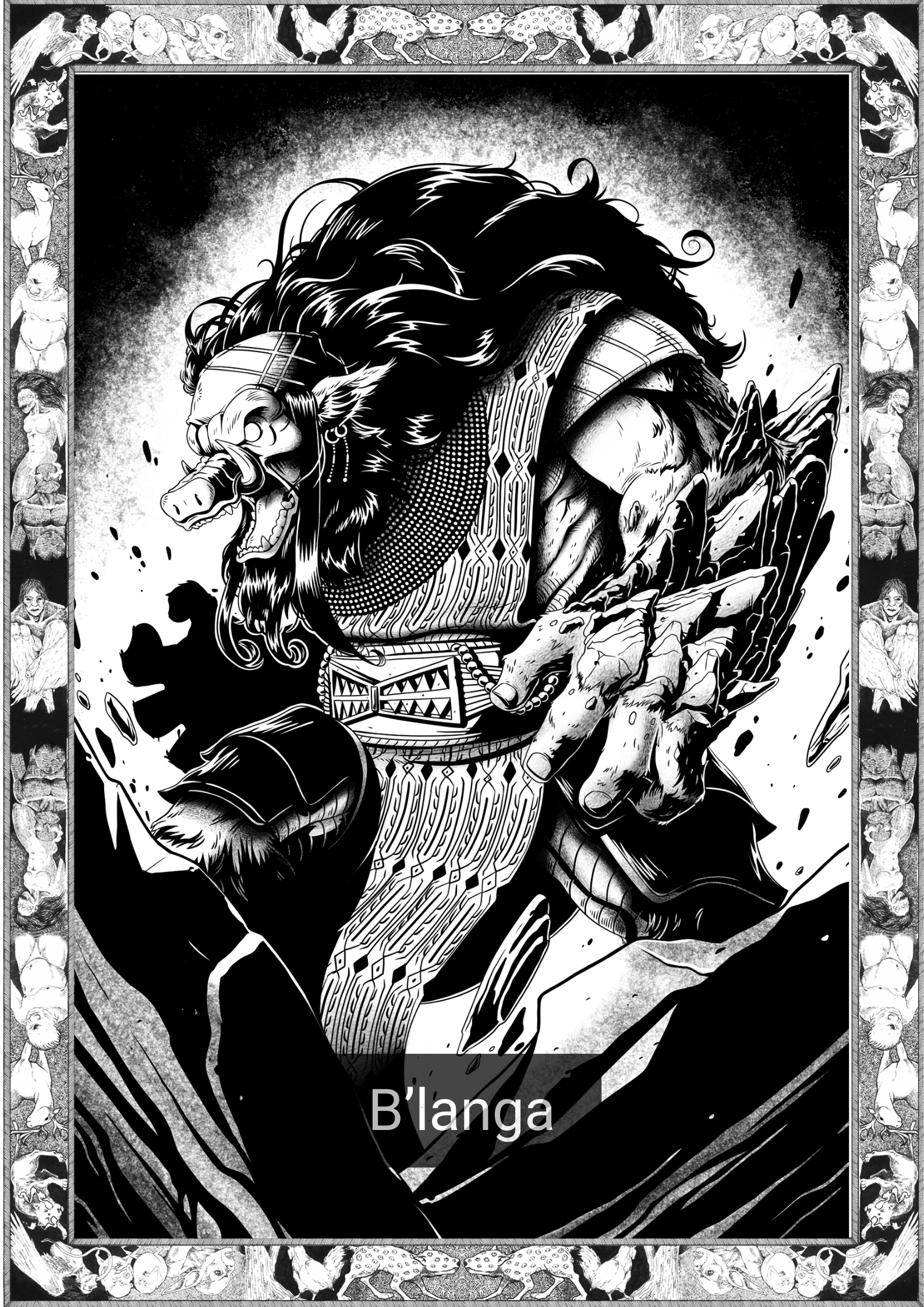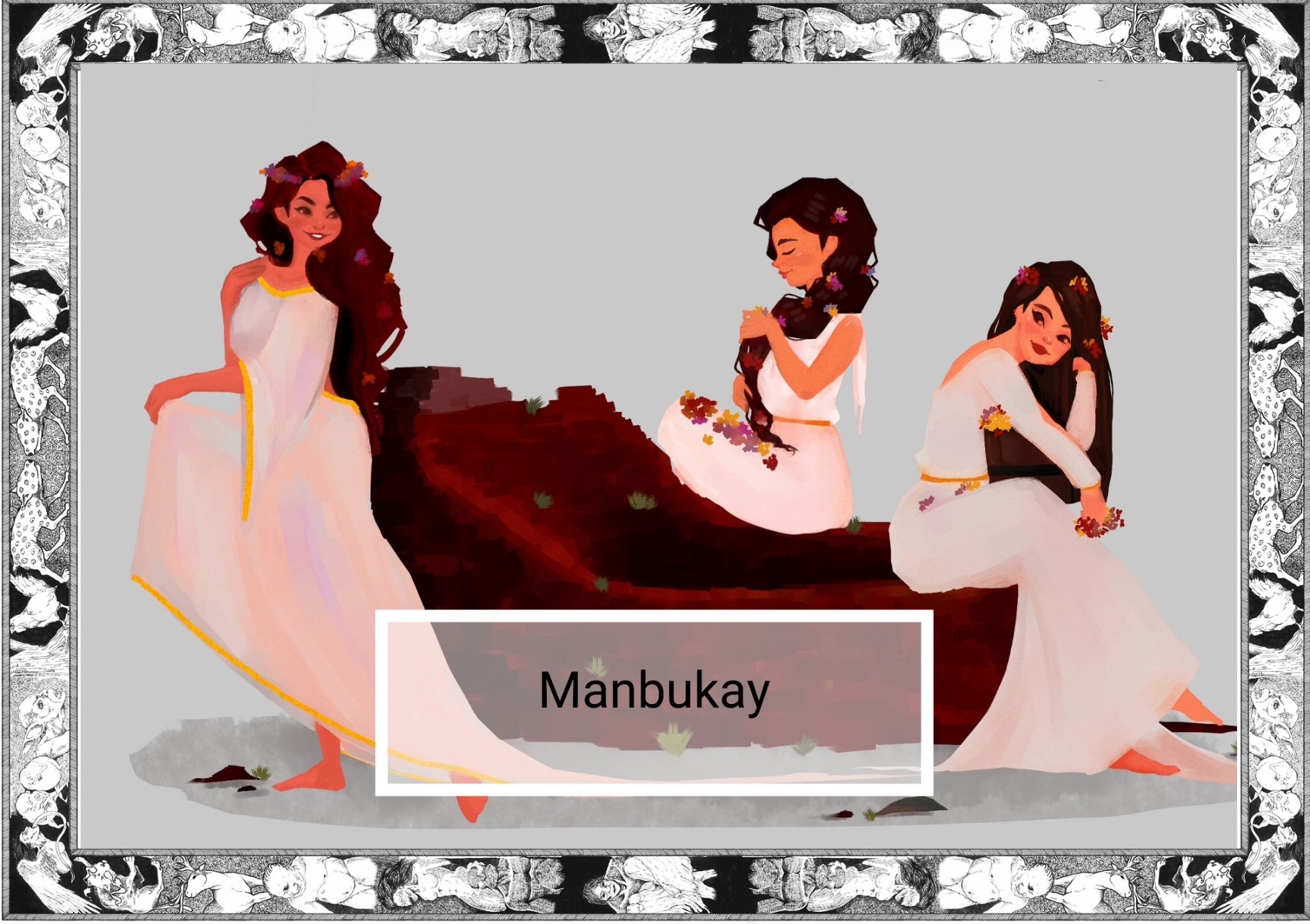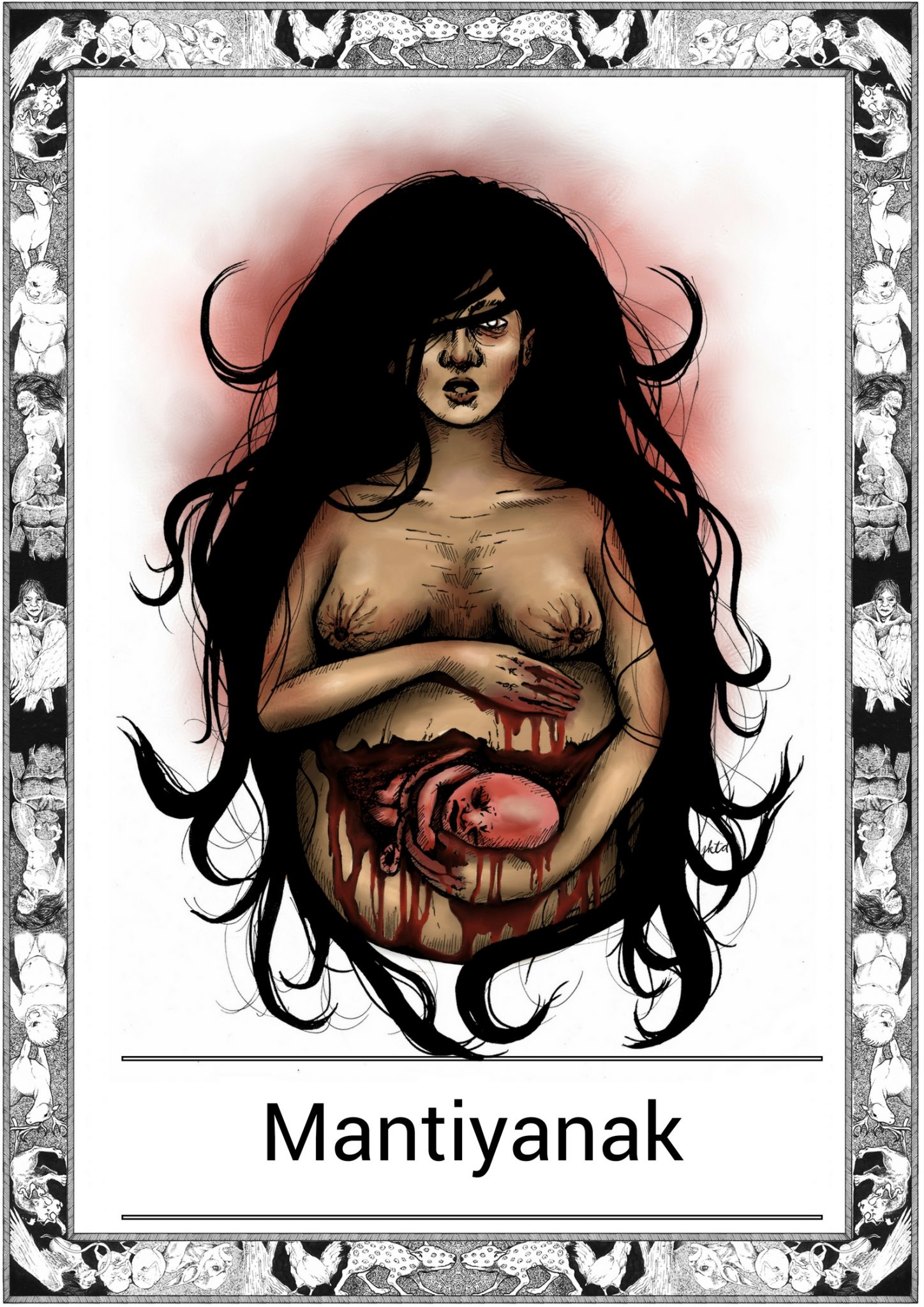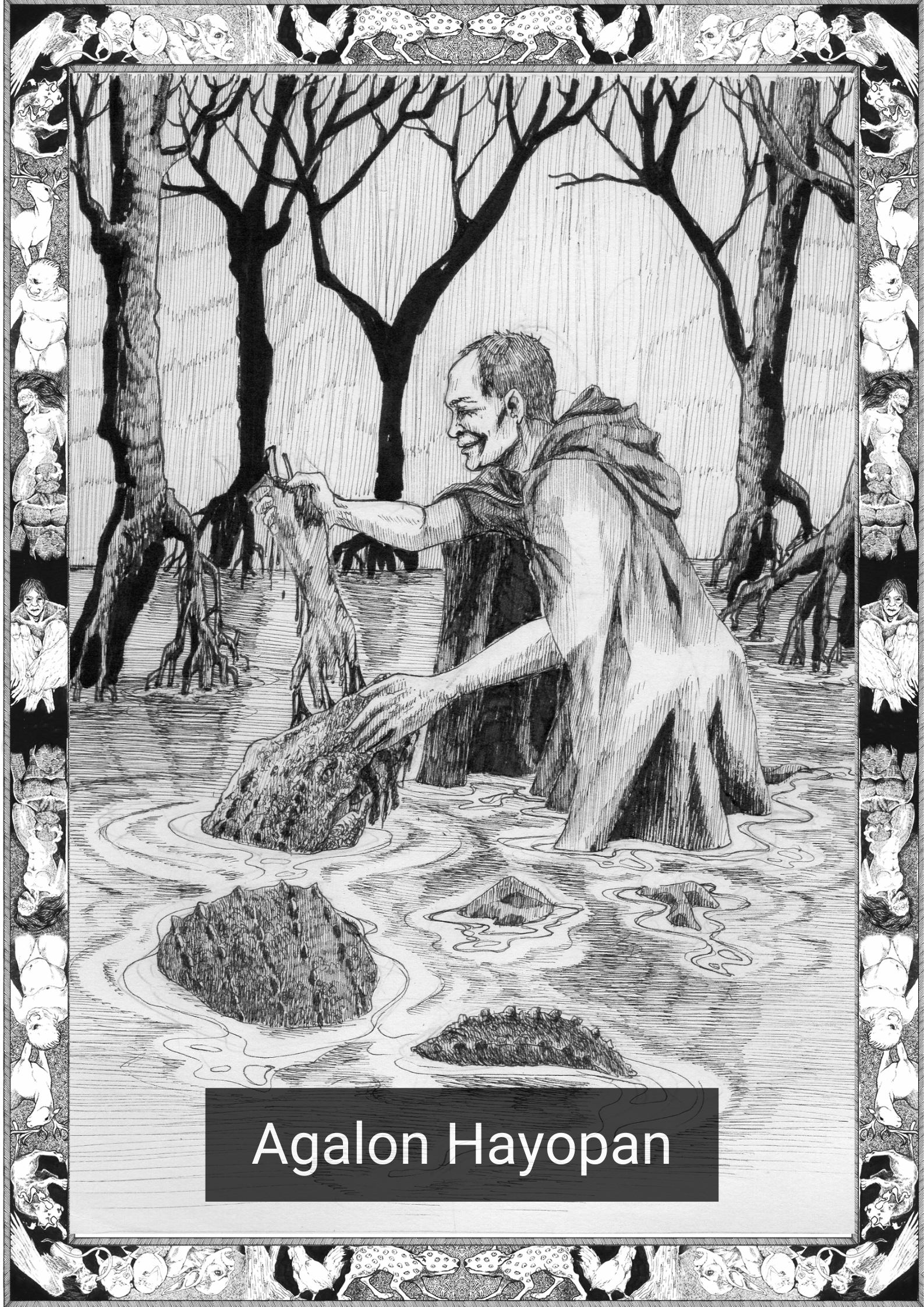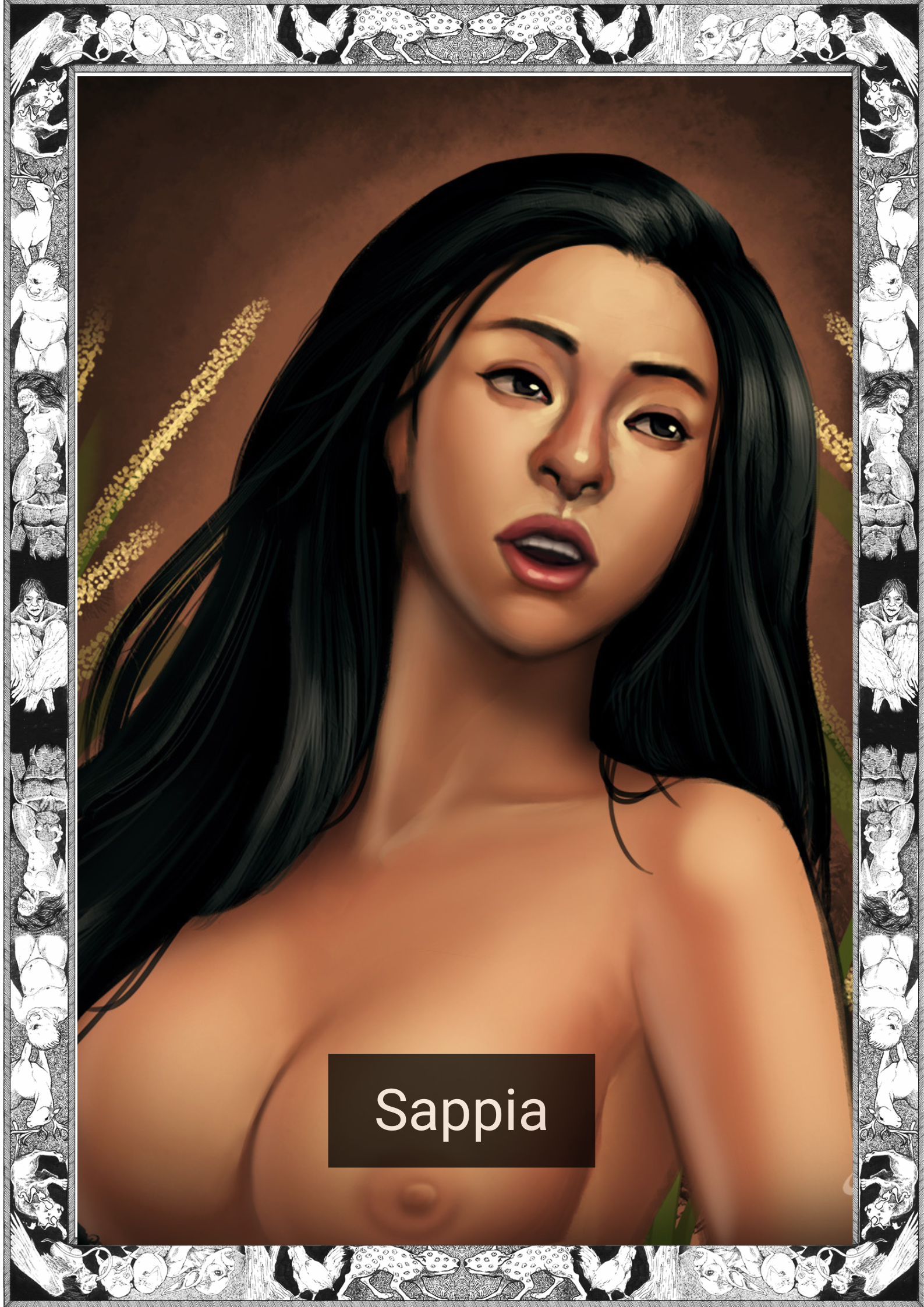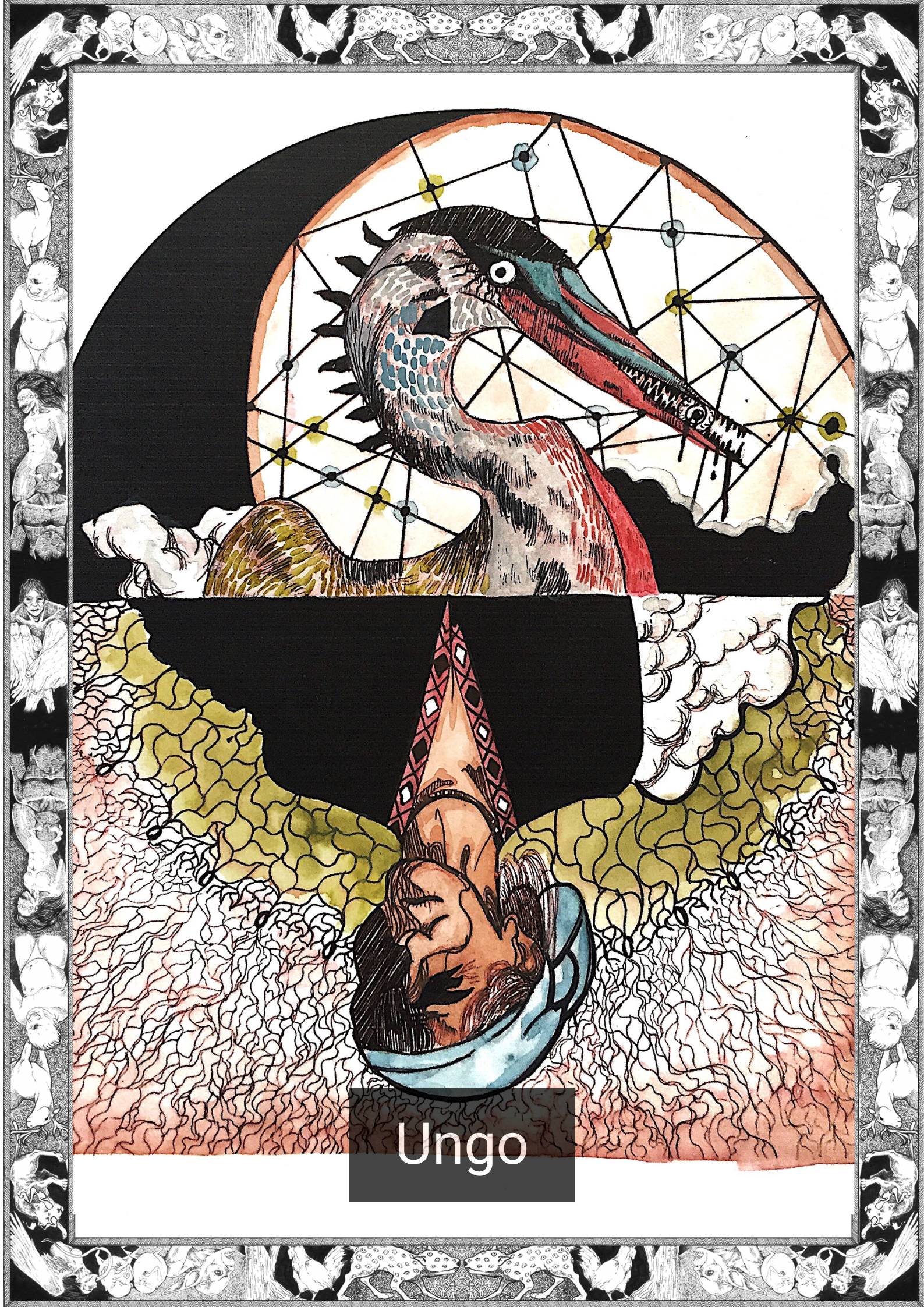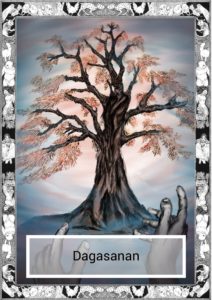
*Note this story is in Aklanon
Kato anay hay may isaea ka mangangayam nga nakasaea. Gin eagas nana ro sapat nga anang inugdakop sa tagudtud it Daeogdog, isaeang ka bukid kun siin ga-istar ro mga dyos. Ro pinaka makakagahom sa tanan nga dyos ngara hay si Gamhanan. Imaw hay may pinasahi nga alaga nga si Panigotlo, isaeang ka usa nga kaputi-puti ag may mahanggod nga mga sungay. Sa isang haboy it saeapang, gin bawian ro sapat it kabuhi.
Kato anay hay may isaeang ka baryo nga wa’t mahimo. Ro paghuma ni Panigotlo miyentras bilog ro buean hay gakahueogan it bugana nga adlaw para sa pagtanum sa pagka-aga. Tanan hay naghinugyaw. Pero ro kasadyahan hay gulping nagpundo sa pagkakita nanda it tawong gapaeapit halin sa tabok it suba. Si Dagasanan nga mangangayam, ginapas-an ro baghok ko alaga ni Gamhanan. Indi nanda hibaton ro grabeng saea ngara. Ililimaw sanda nga bumuoe ko andang mga bangkaw ag mga sanduko ag ginpatay nanda si Dagasanan sa may suba. Dato man ro ginubra nanda sa anang ama sa andang baeay.
Kato anay hay may isaeang ka kaeag nga nagahamdom it pagbaeos. Ro kaeag ni Dagasanan nga mangangayam hay indi gid himayang. May puno it inyam nga nagtubo sa pungsod kun siin imaw namatay. Sa handong ko mga sanga, dikato imaw nagapanukot. Isaeang ka unga nga taga baryo ro gabayad sa gin-ubra ko anang mga ninuno. Isaeang ka unga kada dag-on, hasta’t hibatyagan man it banwa ro kasakit it andang kahisa.
Kato anay hay may isaeang ka easkit nga wa gapati sa mga kahaeadlok nga sugilanon. Gin huyo-huyo imaw ko anang mga amigo nga mageangoy sa may puno it inyam pero ginhibaygan eang nana sanda. Hambae nana nga tal-it sanda dahil gapinati sanda sa mga istorya it andang mga lolo ag lola. Sayod nana nga iba imaw. Nga imaw ro pinaka maisog kandang tanan. Wa’t paduha-duha nga nageumpat imaw sa tubi.
Hasta makaron hay may parte gihapon sa isaeang ka suba sa Akean nga ro pangaean hay Dagasanan. Suno kanda, ro daguno halin sa mga bato hay ro anang kaeag nga gaueahab sa kasakit, hamtang gausoy ko anang masunod nga biktima.
=———————————–=
English Version
There was once a hunter who made a terrible mistake. He searched for his quarry in the shadow of Mount Daeogdog, where the gods of his people lived. The most powerful of all the gods was Gamhanan, and he had a special pet. This favored creature of the great god was called the Panigotlo, a pristine, white deer with full antlers. One spear was all it took to silence the majestic sound of this enchanted creature.
There was once a village that had no choice. A full moon and the bleating of the Panigotlo signaled an abundant day for planting the next morning. The festivities and merriment suddenly stopped when they saw a figure approaching across the river. The hunter, Dagasanan, had on his shoulders the carcass of Gamhanan’s pet. They all knew that they could not abide by this sacrilege of the great god. The villagers took their spears and swords and slew Dagasanan by the river and his father in their home.
There was once a spirit that thirsted for vengeance. On the spot where Dagasanan was killed, an inyam tree grew. The hunter’s ghost would not know rest. The tree cast a shadow and on that spot his hunger for revenge would be sated. One child of the village would pay for what their ancestors had done. A child every year until the villagers would know the pain that he felt when his friends betrayed him.
There was once a boy who didn’t believe in ghost stories. His friends dared him to swim by the inyam tree and all he did was laugh. The boy called his friends cowards for believing in the stories that their lolos and lolas told them. He knew he was different and the bravest of their group, so he took the challenge and jumped in the water.
There is still a part of a river in Aklan named after the hunter, Dagasanan and an inyam tree that people avoid. They say that the loud noises that come from the rocks are his spirit crying in pain, looking for his next victim.
————————–
*Aklanon (Akeanon), also known as Bisaya/Binisaya nga Aklanon/Inaklanon or simply Aklan, is an Austronesian language of the Bisayan subgroup spoken by the Aklanon people in the province of Aklan on the island of Panay in the Philippines. Its unique feature among other Bisayan languages is the close-mid back unrounded vowel [ɤ] occurring as part of diphthongs and traditionally written with the letter ⟨Ee⟩ such as in the autonyms Akean and Akeanon. However, this phoneme is also present in other but geographically scattered and distant Philippine languages, namely Itbayat, Isneg, Manobo, Samal and Sagada.
Written by Karl Gaverza
Aklanon Translation by Chi Payba-Suarez
Copyright © Karl Gaverza
Translation Copyright © Chi Payba-Suarez
Story Adapted from ‘Legend of Aklan’ in Philippine Folk Literature: The Legends. Eugenio. 2002.
Dagasanan Illustration and Watercolor by Robert Rañosa Del Prado
